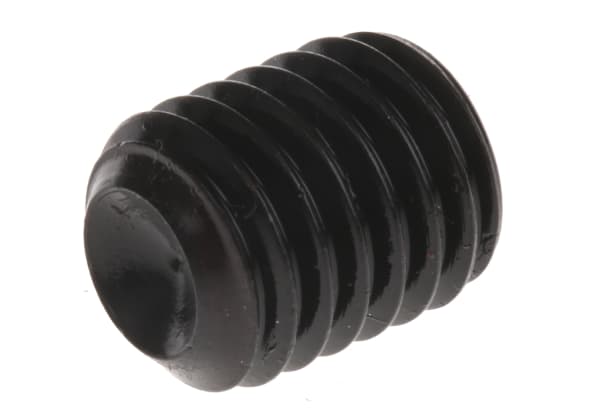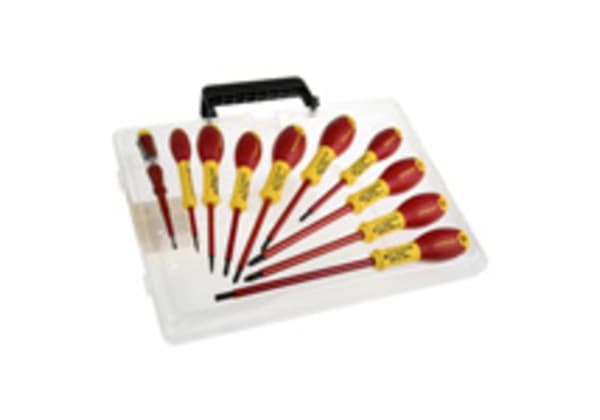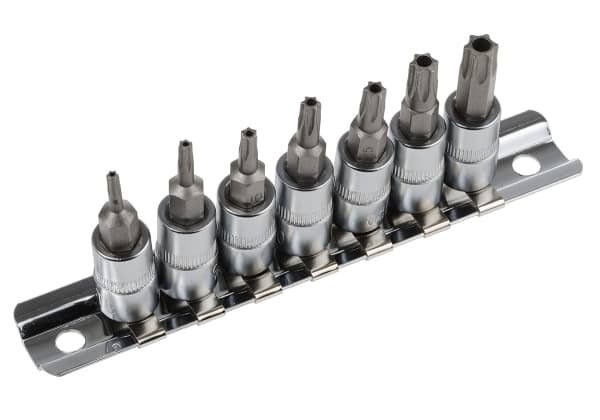- Published 11 Jan 2023
- Last Modified 9 Aug 2023
- 10 min
A Complete Guide to Set Screws
Our set screws guide explains all you need to know - common uses, types, and the best products available.

This comprehensive guide to set screws explains all you need to know about choosing, buying and using set screws for most every day builds and applications. We explore the different types of set screw sold online in the UK and suggest which might be the best products available for a particular type of job.
Ultimately, the purpose of this guide is to help you understand exactly what set screws are and their most common uses. We also highlight how set screws are different from bolts, and why you should always carry a few of each in your toolbox.
What are Set Screws?
Set screws are sometimes called setscrews, socket set screws, or grub screws. They are a type of threaded fastener, most often used for securing components in place. This generally means affixing two or more loose parts to one another, for example by holding one component tightly against (or inside) a second surface.
The key pinning action of one component against another is what differentiates set screws and grub screws from general-purpose screws. In short, they are used to create compression forces which hold two loose objects firmly together without having to rely on a nut.
Typically, set screws are intended for use in fastening down (setting) parts or components that would otherwise be able to move or slide around relative to one another. The set screw works by passing through a threaded hole in one component and butting up tightly against the surface of a second part on the rear side.
They can perform this setting function thanks to their characteristic flat-ended tips, a key feature of most set screw designs. However, it should be noted that cone-point set screws (sometimes referred to simply as cone screws) do also exist. Cone set screws are designed to achieve a similar sort of fixing function, but with the addition of a pointed tip. This is used to penetrate the underlying surface rather than simply pressing up hard against it.
Set screws are widely used in all manner of engineering, product design and repair applications, often to keep a potentially moving part locked in place. This could involve fixing a component against a baseplate, for example, in various sorts of panel arrays and mechanical assemblies. Common specific examples of set screw use might include affixing spindle cams and handles or securing gears and pulleys to a shaft.
Types of Set Screws
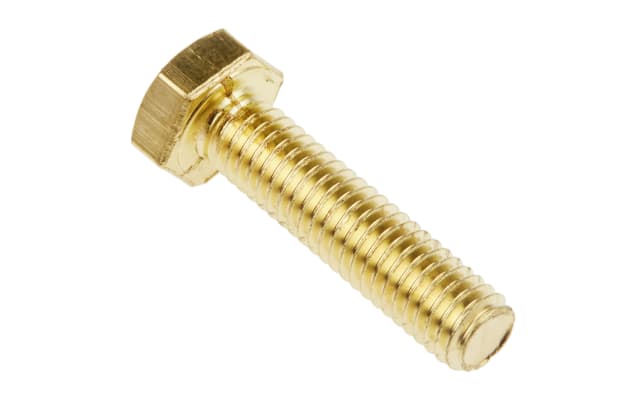
There are numerous types of set screws for sale and these will often be categorised under a variety of different names and uses.
Most have a few key features in common. For example, a large majority of set screws have no head. Therefore, they are usually tightened via a recessed socket drive, often using a hex key or similar tool. Most are also fully threaded, meaning the threads run right from the tip of the screw back to the socket drive end.
The naming conventions for different types of set screws typically help to identify the physical characteristics or properties of that particular screw type. Their names may also indicate precisely how a particular type of set screw is supposed to be used, although this is not always the case.
What are Set Screws Used for?
Common types of set screws you might encounter include all the varieties listed below. Their respective uses are also noted in each case:
Plain Cup Screws
- Cupped set screws have a slightly concave recess in the flat end of their tips
- The thinner circumference of the cup is where all the pressure is exerted against the rear component, as opposed to the entire flat tip making even contact
- This design helps to provide good torque and locking force against the object being pinned while minimising the risk of damage to the screw shaft end through over-tightening
- As force is exerted over a smaller, sharper area with a cup set screw than a flat end screw, there is a higher chance of marking the component or surface which is being fastened
- Plain cup screws are one of the most common types of set screw in widespread use
Knurled Cup Screws
- Knurled cup set screws behave similarly to plain cup screws except that the outer edge of the cup also features jagged teeth (knurling)
- The knurling is designed to bite in the surface that the screw is butting up with, providing even stronger grip through a ratcheting action
- They are particularly useful when there is a risk of a standard set screw working loose over time, for example, in applications exposed to high vibration
- As the biting action of knurled cup set screws will cause significant surface markings on fastened parts, they are usually chosen for use in permanent or semi-permanent assemblies
- Knurled cup screws should not be reused once removed as the serrated teeth of the knurled design will be damaged in the process of unfastening the screw
Flat Set Screws
- Flat point set screws are made with a completely flattened end
- The flattened end provides a more evenly distributed compression force where the tip makes contact with a base surface
- Flat point set screws tend to cause relatively little damage to the parts or surfaces they are pinning since the tip does not penetrate the surface to any significant degree
- Flat end screws are reusable since removing the screws does not damage them in any way
Oval Set Screws
- Oval point socket set screws have a rounded, slightly convex tip. They are sometimes called domed point set screws
- Their design is intended to minimise the risk of damage to surface and components being locked in place
- Oval point screws can also allow for easier adjustment without having to completely remove or reset the screw. This is because the smaller, rounded point of contact makes movement against the fastened surface somewhat easier than with a flat end
Cone Set Screws
- Cone point set screws are sharpened at the tip and designed to penetrate the underlying surface to a degree
- This wedging in function means that they provide some of the strongest grip of any socket set screw design in terms of both axial and torsion forces
- Since they are inherently damaging to sub-surfaces, cone point set screws are almost exclusively used in permanent fixtures, or sometimes as a hanger or pivot
Dog Point Set Screws and Half-Dog Point Set Screws
- Dog point set screws and half-dog point set screws have a lengthened, protruding tip or nose that is flattened out at the end. They are sometimes called extended point set screws for this reason
- The protrusion on a dog point set screw is longer than that of half-dog screws
- These extended ends are intended to fit into an equivalent sized hole or recess in the underlying material surface, similar to a dowel
- They are effectively a halfway house between a standard flat point set screw and a sharpened cone point set screw
- They are intended for use in permanent or semi-permanent settings, although they can potentially be removed and reused in a suitable location
Soft-Tipped Set Screws
- Soft-tipped set screws have a softer and more malleable end section than the main body of the screw
- This design enables the soft tip to deform against the surface material as the screw is driven into place, enabling better locking grip on uneven or non-flat surfaces
- The tip can either be made of softer metal such as brass, or of other materials altogether. For instance, nylon-tipped set screws are common
Ball-Point Set Screws
- A full ball-point socket set screw features an actual ball tip embedded into the end of the screw
- This type of set screw can be useful when two non-parallel surfaces or materials need to be clamped firmly together
Set Screw Drive Types
As with all types of general-purpose screw, grub screws and set screws are available online with a variety of different socket drive types.
It is worth noting that the drive type would usually be referred to as the set screw head type. However, the majority of set screws don’t have a head per se (they are often referred to as blind screws for this reason). Instead, they tend to be driven via recessed sockets of various types, located at what would normally be the head end.
Straight Slot
A straight slot set screw has a single recessed slot, typically intended for driving with a traditional flathead screwdriver or drill bit.
Square Socket and External Square
Square drive socket set screws are also available in both recessed and external variants. The square-shaped drive also allows for more torque and less slippage than with a single slot version, although it is generally considered less secure than a hex equivalent.
Bristol Spline
Bristol spline set screws, sometimes simply called Bristol screws, feature a splined socket recess with an array of either four or six small teeth protruding inwards from the outer edge. This arrangement ensures that all driving force is exerted at an exactly perpendicular (90 degree) angle to the fastener splines themselves, reducing the risk of stripping the socket drive under heavy torque.
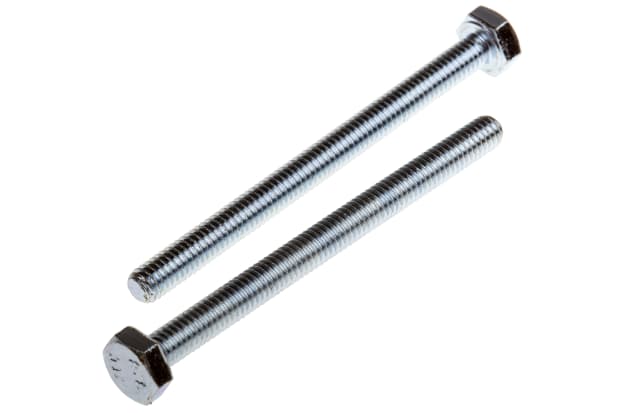
Hex Socket and External Hex
Hex socket set screws are generally the most common drive type. Most often this will be an internal recessed drive socket. In some cases, the grub screw will feature a more traditional protruding head design, similar in appearance to a standard bolt. Hex grub screws provide a non-slip, deformation-resistant secure drive socket that helps the user to apply more torque when seating the set screw.
FAQs
How Do You Screw in a Set Screw?
The correct way to drive in a set screw will depend on the type of socket drive (or external drive) featured on a particular set screw type. You will need to make sure that you have got the right sort of screwdriver, hex key, or Allen key in your toolkit for working with the type of set screws you are using.
How Do You Adjust a Set Screw?
Some set screws are not designed to be adjusted once seated. Knurled cup set screws, for example, are intended as a more permanent fixture. You may want to be able to adjust a set screw after installation, for example, if it has loosened, or if the initial positioning is not quite correct. In this case, you should choose a more adjustable screw type such as an oval point set screw.
What is the Difference Between a Set Screw and a Grub Screw?
There is little difference in overall function between a set screw and a grub screw, and the two names are often used interchangeably. However, there is some difference in national/regional usage of the two terms:
- In the UK, set screws are almost always fully threaded and can sometimes have a protruding external hex head
- Grub screw is also a fairly widely used term in the UK, but it does not necessarily imply a lack of any external head drive
- In the US, set screws are much more commonly called grub screws and they tend to be exclusively of the blind (headless) variety
- US grub screws or set screws may or may not be fully threaded. If not, they function similarly to traditional bolts but are often used without a nut
- It is more common in the US for fully-threaded bolts with a small head to be referred to as cap screws
